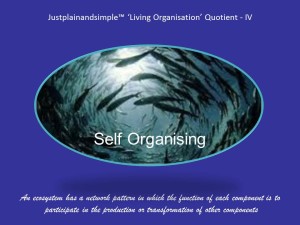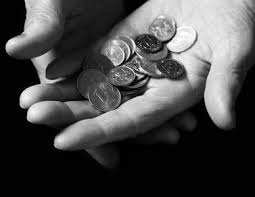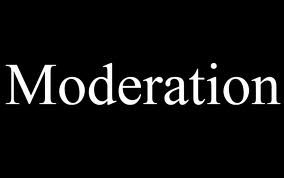
2,864 total views, 2 views today
No Tall Claims. No Big Promises. No Lofty Vision.
Justplainandsimple ….. Serving to Help Realise
Business, Professional and Personal Potential …..


2,864 total views, 2 views today
 Let’s ask any entrepreneur the question : Why does your business exist ??
Let’s ask any entrepreneur the question : Why does your business exist ??
Their answers will get bucketed in only two Justplainandsimple™ reasons and in this order :
1)Creating Value for the customer
2)Creating ROI for the Owner
Only if the customers see value, will more of them buy your products and services (n); more frequently (f) and pay you more (p). The cumulative product of these is Revenue (R) i.e. n X f X p. So, value creation is a necessary condition !!
If the entrepreneur does not make a return on his/her resources (after and inspite of and because of providing Value to the customer), there is no reason for them to be in business. Simply put, there could be other uses they can put their resources to, with better risk weighted returns.
However, one could argue, that there is another case/option of Creating Value without looking for returns. A ‘charity/donation’ framework !? This has different implications, which may not be sustainable too. A lot of ‘not for profit’ organisations get caught in this trap. Let’s use this as an example at one end of the spectrum to demonstrate a point.
The logic works like this. It is a ‘not for profit’ organisation, so profit is not an objective to be sought.
Hence, starting at the top of the P&L, fine tuning and polishing the Value Offering to yield optimal R = n X f X p loses significance. This leads to suboptimal product/service offerings coming from this sector. No wonder so many ‘charity’ organisations have gathered a connotation of sub standard offerings.
Next casualty in line is productivity. Since it is ‘not for profit’, squeezing every expense line for productivity is not key. This takes a very critical role in a ‘for profit’ organization.
Hence what flows down at the base of the P&L, is ‘NO PROFIT’ ….. a self fulfilling prophecy !! From where do resources come for funding the loss or resources for growing the scale or further expansion of scope ?? More donation !! Sustainability is affected.
What is needed to flow out, even in such an example of a ‘not for profit’, is a SURPLUS at the base of the P&L after revenues and expenses have been churned. Whatever purpose that surplus maybe put to. Not for returns to owners, but for building scale, for reaching more beneficiaries, for further investments ….. !?
So whether we call it ‘profit’ or ‘surplus’ the significance is clear. QED.
Reasonable surplus or how much is enough, is a matter for another debate related to human greed and we keep it out of the scope of this discussion for the time being. Needless to say, Profit or surplus is a necessary but not sufficient condition. Therefore we have new concepts of triple bottom line coming up : profit, people and planet.
If profit is a requirement that has to be met, we get answers in the way we define it. Right in the beginning of this article, I indicated the second reason for the existence of businesses to be ‘creating ROI for the owner’.
The entrepreneur is looking for ROI. So relative ROIs from different opportunities are compared and investments made. Defining profit this way, helps us in understanding and resolving this issue creatively.
Profit cannot be made mathematically by increasing prices and cutting expenses. Pricing the product to the market is the key. More customers (n) are not going to pay more (p) or buy more frequently (f) than the value they attach to the offering.
Also, you cannot cost cut your way to glory. There will be expenses, there will be costs. Understanding ‘what adds most value to the customer’, to empathise, allows the business to focus and allocate expenses in areas that are important for value creation and hence to reap benefits of leverage and productivity ….. this is rewarded by the right customers (n) buying at the right frequency (f) at the right price (p) !!
Fundamentally, business is ‘philosophy’, not mathematics.
The answer to ‘Profits in low income markets’ therefore lies in creativity and innovation. To find ways of increasing productivity, efficiency and effectiveness.
Nature teaches us various ways in which a dynamic balance is maintained in ecosystems. An organism (organization) picks up signals from its environment (market reading) and makes structural changes within to respond intelligently and in turn influences the environment. This enables it to learn, co-exist and evolve continuously. The story of evolution is a story of collaboration of species and co-existing/co-evolving symbiotically.
Who influences whom then ? The environment and organism keep the whole ecosystem in a harmonious dynamic balance, playing a continuous dance !! So also should organisations and low income markets ….. a continuous dance of celebrating harmony in an interdependent partnership ….. with flexibility and respecting and honouring integrity and diversity in action !!
This was first published in the Ennovent Blog: Innovations for Sustainability
3,431 total views, no views today
 Strategy is like a ‘Guide Map’ in a neighborhood locality. To figure out how to reach House No.245, one has to first anchor the ‘You Are Here’ position. Then, the route to take is the strategy.
Strategy is like a ‘Guide Map’ in a neighborhood locality. To figure out how to reach House No.245, one has to first anchor the ‘You Are Here’ position. Then, the route to take is the strategy.
In Business Strategy or Personal Leadership Strategy ….. or in any kind of strategy for that matter, be it even strategy for personal finance, the step after establishing ‘Intentionality’, is anchoring the ‘You Are Here’. Also called Situation Analysis in business strategy theory.
This calls for a frank look at SWOT, environmental factors, stage in life, Value Systems, Passion, etc. etc., ‘ACCEPTING’ the ‘AS IS’ and building the same into the strategy equation.
In a nonlinear system, sensitive dependence on initial conditions can cause huge differences at later stages. The Butterfly Effect ….. The theoretical example of a hurricane being influenced by minor disturbances due to the flapping of the wings of a distant butterfly several weeks earlier.
Hence the significance of Introspection, Self-Awareness and Self-Acceptance …..

2,360 total views, no views today
Of all the Values that are important in the play of Strategy, Courage ranks extremely high. It is the ability to take a stand and to have the strength to do something in the face of adversity, challenge and pain.
 In the run up to Strategy, even before a Strategy is put in place, one has to have strong conviction in an idea, thought, mission, vision and/or intention. Needless to say, due diligence must be done in evaluating all scenarios and alternatives.
In the run up to Strategy, even before a Strategy is put in place, one has to have strong conviction in an idea, thought, mission, vision and/or intention. Needless to say, due diligence must be done in evaluating all scenarios and alternatives.
But once all deliberations are done and a course of action is determined to be wise, never discredit your judgement. Stand squarely behind your strategy and decision.
Course correction, basis midway changes, however, is a wise thing to do. Flexibility, not rigidity, is a characteristic of the Courageous. The virtue of honesty, truthfulness and a courageous recognition of reality combine into one of the most important virtues ….. Integrity.
 There will be people who misunderstand intentions and actions and condemn, but if, as per your judgement and wholistic assessment, you are doing ‘The Right Thing’ and ‘The Right Way’, there is nothing to fear.
There will be people who misunderstand intentions and actions and condemn, but if, as per your judgement and wholistic assessment, you are doing ‘The Right Thing’ and ‘The Right Way’, there is nothing to fear.
Take a stand !!
3,985 total views, no views today
One of my biggest lessons in life has been related to ‘Moderation’. Extremes, I learned, are most often not the right route to take. It is more a ‘philosophy’ of life one builds on and becomes a way of thinking and taking decisions. 
In pure business terms, I have seen the merit of cutting out extremes ….. on the one end of spectrum, to ‘reduce risk’ by not planning too aggressively ….. and on the other, to avoid not being ambitious/aspirational enough.
On another dimension, there is moderation needed between becoming too quantitative in strategy formulation and hence numbers driven vs staying highly qualitative and hence not specific enough. 
Strategy also needs a good balance between the rational left brain and creative right brain thinking. I have seen merits of balancing a strategy by making a logical plan and then stepping back and looking at the ‘gestalt’ to ‘see and feel whether it all makes sense’ ….. using intuition and gut to ‘add that extra beauty’ to a well developed plan !!
Life, perse, is a perfect example of the outcome of moderation on planet earth and in homeostasis in our bodies. Mother Earth operates in a well defined range of temperature, humidity, atmospheric conditions ….. and any variation outside this range is corrected through well defined feedback mechanisms. So also is true with our bodies. Any disturbance of this delicate dynamic balance can cause disturbances and disease. A moderated and balanced system, in harmony with its ecosystem thrives with sustainable life in Bliss !! Strategy should ensure moderated and dynamic flow of life in a system.
2,853 total views, no views today